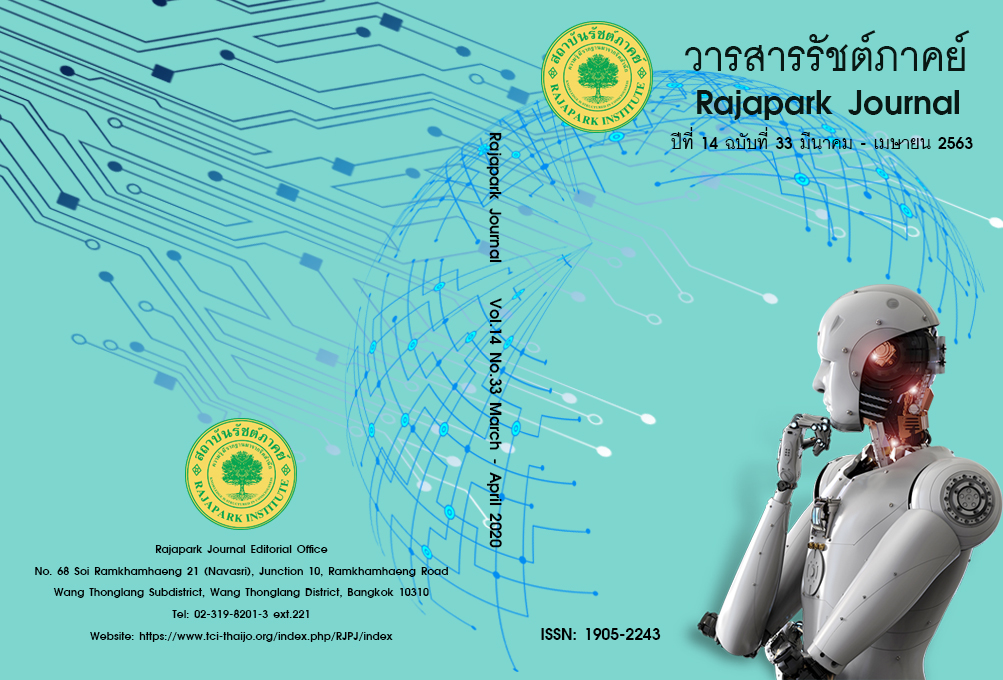Development of Maternity Law in Thailand
Main Article Content
Abstract
As James J. Heckman (2011) emphasizes on the importance of the presence of parents during the infancy stage when early skill development fosters subsequent learning. This, however, is nearly impossible with the labor force today. Many parents have to choose between work and their child. Maternity leave is the only time when mothers are granted time to adjust and focus only on themselves and their newborns. However, unfortunately, maternity leave is not compulsory in many countries provide the same package for the same role. By looking at maternity laws around the world, we can examine how maternity leave helps women balance their responsibilities. This paper uses content analysis as a qualitative method to reviews maternity leave as part of labor law in Thailand and around the world, in order to examine Thailand’s maternity leave policy and propose its improvement. The content that was used in the research process was available on government websites such as the Ministry of Labor and Social Security Office, considering the legitimacy of the sources. For content analysis, the Labor Protection Act B.E.2562 (No.7) and the Social Security Act Amendment (No.4) B.E. 2558 were the base of comparison. The objectives of the study were to examine principles underlying maternity protection in Thailand; identifying problems arising from enforcing maternity leave laws; comparing maternity law, policy and practice between Thailand and other countries; and lastly, providing recommendations for future policy. The results showed that maternity leave policy in Thailand lack enforcement criteria which pressures working mothers to renounce their rights. By comparison with other countries, its laws are more problematic with a weak legislative structure. In comparison to other countries, Thai policies are similar, if not better to those of South East Asia countries. However, its policies are still behind Europe, where transferability, duration and payment are offered as compulsory. Thailand must make efforts to improve conditions for the women who ensure that its new generations are invested in early on, through maternity leave policy.
Article Details
Views and opinions appearing in the Journal it is the responsibility of the author of the article, and does not constitute the view and responsibility of the editorial team.
References
Bryman, A. (2016). Social research methods. Oxford university press.
Carmen, C. C., & Maria, P. M. (2016). Parental Leave Policy and Gender Equality in Europe. Feminist Economics,
(3), 51-73.
Chattopadhyay, A. (2005). Women and entrepreneurship. Yojana, a Monthly Journal of Ministry of Information and Broadcasting, 5(1), New Delhi.
Elliot, C. M. (2008). Global empowerment of women: Responses to globalization and politicized religions.
New York: Routledge.
Friedan, B. (1963). The feminine Mystique. Harmondsworth: Penguin.
Friedan, B. (1981). The second stage. New York: Summit Books.
Gill, J., & Meier, K. J. (2000). Public administration research and practice: A methodological manifesto. Journal of
Public Administration Research and Theory, 10(1), 157-199.
Glass, J. L., & Tetsushi, F. (1995). Employer Characteristics and the Provision of Family Responsive Policies. Work
and Occupations, 22(4), 380-411.
Graneheim, U. H., & Lundman, B. (2004). Qualitative content analysis in nursing research: concepts, procedures
and measures to achieve trustworthiness. Nurse education today, 24(2), 105-112.
Grant, C., & Osanloo, A. (2014). Understanding, selecting, and integrating a theoretical framework in dissertation
research: Creating the blueprint for your “house”. Administrative Issues Journal, 4(2), 4.
Heckman, J. (2011). The economics of inequality: The value of early childhood education. American Educator, 35(1), 31-47.
Hesse-Biber, S. N. (2013). Feminist research practice: A primer. Sage Publications.
Hsieh, H. F., & Shannon, S. E. (2005). Three approaches to qualitative content analysis. SAGE Journals; Qualitative
health research, 15(9), 1277-1288.
Hutchinson, J. R. (2011). Feminist Theories and Their Application to Public Administration. In Maria J. D’agostino & Helisse Levine (ed.), Women in public administration: theory and practice. Sudbury, MA: Jones & Bartlett.
Imenda, S. (2014). Is there a conceptual difference between theoretical and conceptual frameworks. Journal of
Social Sciences, 38(2), 185-195.
Labor Protection Act B.E. 2562
Labor Relations Act B.E. 2518
Leavy, P. L. (2007). The feminist practice of content analysis. Feminist research practice: A primer, pp.223-248.
Meyer, J. W., & Scott, W. R., (1983). Organizational Environments: Ritual and Rationality. Beverly Hills, CA: Sage.
Ray, R., Gornick, Janet C., & Schmitt. J., (2010). Who Cares? Assessing Generosity and Gender Equality in Parental
Leave Policy Designs in 21 Countries. Journal of European Social Policy, 20(3), 196-216.
Skrentny, J. D. (1996). Ironies of Affirmative Action: Politics, Culture, and Justice in America. Chicago: University of
Chicago Press.
Social Security Act Amendment B.E. 2558
Strivers, C. (2002). Gender images in public administration (2nd ed.). Thousand Oaks, CA: Sage Publications.
Sushama, S. (1998). Women and Empowerment- Approach and Strategies. Delhi: Discovery Publishing House.
Ventresca, M. J., & Mohr, J. W. (2017). Archival research methods. In book: Blackwell companion to organizations,
Chapter: Archival Research Methods, Publisher: Blackwell, pp.805-828.


